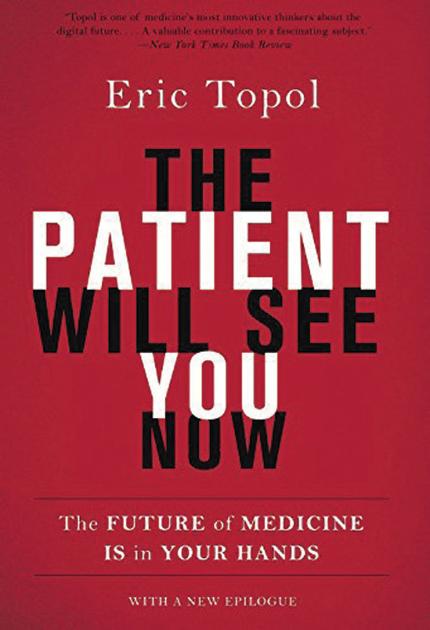
Before the COVID-19 pandemic, health-care organizations and practitioners were making tentative steps toward the adoption of digital tools to increase access and timeliness of health- service delivery.
B.C. became a leader in Canada when the previous government instituted fee codes that provided B.C. doctors with financial remuneration for taking appointments with patients using virtual platforms.
Other provinces offered similar opportunities, but on a private pay basis. With the current pandemic, the need to use technology to offer distance health services like physician consultation and examination has no doubt exploded.
In his 2014 book, The Patient Will See You Now: The Future of Medicine Is in Your Hands, Eric Topol foreshadows the gradual proliferation of the use of personal digital devices like our smartphones, to democratize health care delivery.
COVID-19 has no doubt increased the breadth and depth of digital device adoption. The question we will need to ask ourselves, the medical community and our governments are, after COVID-19, what place will these technologies occupy in the new normal? For example, should funding for virtual visits be limited to those taking place between a patient and their full-service primary care practitioner?
According to Eric Topol, the large-scale adoption of personal digital devices in health will result in the ‘democratization”” of service delivery. Some of the many applications he highlights include using an app to assess a skin rash and recommend “specific next steps, perhaps treatment with a topical ointment or a visit to a dermatologist for further assessment”
He goes further and says this assessment would be delivered faster and would be “more accurate than most doctors.”
Dr. Topol, a world-renowned
cardiologist and a frequently-cited medical researcher, says he knew the world had changed when a patient sent him an email with the subject line “I’m in atrial fib, now what do I do?”
The patient’s phone hadn’t just recorded the data, it told him he was in A-fib, and this was done using the technology that existed six years ago. Think of what your watch can do today.
“Putting this power in everyone’s pocket could preempt an emergency room visit or an urgent clinic appointment,” says Dr. Topol.
With the hundreds of embedded sensors in our cars, phones, and watches — Dr. Topol asks, “Why shouldn’t we have any in our bodies?” They could monitor blood pressure, heart rhythm, respiratory rate, oxygen concentration in the blood, heart rate variability, cardiac output and stroke volume, galvanic skin response, body temperature, eye pressure, blood glucose, brain waves, intracranial pressure, muscle movements, and many other metrics.
Humans currently enjoy many mechanical and electronic embedded devices, why not a sensor that can alert us to trouble before it becomes acute and help prevent serious health impacts? Think hips, knees, heart valves, implants to help with Parkinson’s disease, hearing impairment, and so many others.
Dr. Topol says,“much of the practice of medicine will reboot and bypass the current deeply-engrained, sacrosanct doctor-dependent operations.
“Just as you can do your electrocardiogram by your smartphone today and get an immediate computer algorithm interpretation, so it will be the case for many diagnostics in the future, such as whether you have sleep apnea or hypertension —anything with simple quantitative data to record, process, and quickly return to you.
“If you’re just interested in checking symptoms, it will be straightforward to enter them into your little device, connect to a supercomputer, and get a top-five list with likelihood rankings of what condition you have. And, of course, a comprehensive list of references if you’re so inclined to look them up.”
Before COVID-19, the adoption rate of new personal digital technologies, described by Dr. Topol, was slower than he would have liked for the many reasons you will find in his book. Yes, some are quite obvious. With the opportunity we now face because of this health crisis, can we leap-frog the ‘reasons’ and truly democratize health care delivery in our province? As he says, “it’s just a question of time.”
Norm Letnick is MLA for Kelowna Lake Country and the Opposition's health critic.
https://news.google.com/__i/rss/rd/articles/CBMiVGh0dHA6Ly93d3cucGVudGljdG9uaGVyYWxkLmNhL2xpZmUvYXJ0aWNsZV82N2I2OTFmNC1hZGQwLTExZWEtYjU5NS01YjM3OTYzMWM4ZDguaHRtbNIBAA?oc=5
2020-06-13 23:48:00Z
CBMiVGh0dHA6Ly93d3cucGVudGljdG9uaGVyYWxkLmNhL2xpZmUvYXJ0aWNsZV82N2I2OTFmNC1hZGQwLTExZWEtYjU5NS01YjM3OTYzMWM4ZDguaHRtbNIBAA
Tidak ada komentar:
Posting Komentar